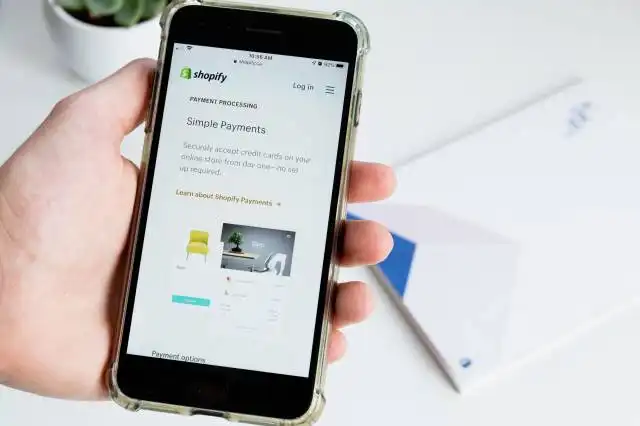Start a Personal Shopper Service
Becoming the Ultimate Fashion Matchmaker: Launching Your Personal Shopper Service
| Updated


PERSONAL SHOPPER SERVICE
Eager to play Cupid between a product and its perfect match? Consider launching a Personal Shopper Service! In this business, your main role is to assist time-pressed, fashion puzzled, or simply convenience-loving clients in finding and purchasing items such as clothes, accessories, gifts, groceries - all tailor-picked based on their style, need, and budget. So, if you have an eye for style, a nose for a bargain, and always get a thrill from the perfect find, being a personal shopper might be your runway to entrepreneurial success!
Jump to Business Plan
RELATED BUSINESS IDEAS
Browse ALL Retail & Shopping Business Ideas
Discover Your Perfect Domain
Unlock the door to your online success with our hand-picked selection of premium domain names. Whether you're starting a new venture or rebranding an existing one, the right domain can set the tone for your digital presence. Browse through our curated list, each with its unique potential to enhance your brand's visibility and credibility.
PERSONAL SHOPPER MINI BUSINESS PLAN
This a quick reality check to help you identify the strengths and weaknesses of your business concept before you dive in.
Expected Percent Margin:
Gross Margin: 15-30% Net Profit Margin: 5-15%
Earnings Projection (Earnings Vary Depending on Clientele and Market Location):
- Daily Earnings: $150 - $300
- Weekly Earnings: $1,050 - $2,100
- Monthly Earnings: $4,500 - $9,000
- Annual Earnings: $54,000 - $108,000
Actions to Hit Those Numbers:
Client Management:
- Initial Client Base: Start by acquiring 5-10 clients and gradually build up to 30-50 over the first year.
- Client Service Packages: Offering packages such as "Weekly Groceries," "Event Shopping," and "Monthly Wardrobe Refresh" allows for stable income stream.
Marketing and Client Acquisition:
- Online Presence: Set up website and social media profiles, updating them consistently.
- Local Networking: Network with local stores and other shopping centers to establish your services.
Cost Control:
- Transportation: Leasing a vehicle or using an existing one might be necessary for large volume shopping. Aim to keep fuel and maintenance under 5% of sales.
Business Operations:
- Shopping Hours: Time spent shopping will depend on client's needs but expect 3-8 hours per day.
- Client Acquisition: Aiming for 1-2 new clients per month will bolster your revenues over time.
- Charge Per Hour: Depending on locations and services, charge from $20-$50 per hour, or consider package pricing.
Just a reminder, these are general approximations and can vary greatly depending on your location, clientele, and specific business strategies. Always consider consulting a financial advisor or business mentor for personalized advice.
NOT WHAT YOU HAD IN MIND? Here are more ideas



Browse ALL Retail & Shopping Business Ideas
Grab Your Business Website Name
Before you get caught up in the whirlwind of setting up your business, invest in a domain name. It's a small but significant step that lays the foundation for your brand and makes it easier for customers to find and trust you. Just like you wouldn't build a house without securing the land first, don't build a business without securing your domain name.
"Why? Can't that wait?" Here's why it shouldn't
Purpose of Article
The purpose of this article is to provide you with a comprehensive guide on how to start a personal shopper service. We will provide you with the necessary steps to help you get started and provide you with the information you need to make informed decisions.
Benefits of Reading Article
By reading this article, you will gain a better understanding of the steps required to start a personal shopper service. You will also learn about the expenses associated with starting and running a business, as well as ways to make money.
Outline of Article
This article will provide you with a step-by-step guide on how to start a personal shopper service in 9 steps. We will discuss the importance of determining if the business is right for you, naming the business, and the expenses associated with starting and running a personal shopper service. We will also provide you with examples on ways to make money.
Step 1: Determine if Starting a Personal Shopper Service is Right for You
Breakdown of Startup Expenses
When starting a personal shopper service, it is important to understand the startup costs associated with the business. These costs include items such as business insurance, licensing fees, and any necessary equipment. Additionally, it is important to consider the cost of marketing and advertising to help get the business off the ground. Depending on the size of the business, there may also be costs associated with renting a space or hiring employees. It is important to research all of these costs and create a budget before starting the business.
Breakdown of Ongoing Expenses
In addition to the startup costs, it is important to consider the ongoing expenses associated with running a personal shopper service. These expenses include items such as taxes, utilities, and any necessary supplies. Additionally, it is important to consider the cost of maintaining a website and any other online presence. Depending on the size of the business, there may also be costs associated with hiring additional employees or renting additional space. It is important to research all of these costs and create a budget before starting the business.
Examples of Ways to Make Money
When starting a personal shopper service, it is important to understand the different ways to make money. One way to make money is to charge a flat fee for each shopping service. Additionally, it is possible to charge a commission for each item purchased. It is also possible to offer additional services such as styling advice or gift-wrapping services for an additional fee. It is important to research the different ways to make money and decide which ones are best for the business.
Step 2: Name the Business
When naming a business, it is important to choose a name that is memorable, unique, and easy to pronounce. It should also be relevant to the type of business being started. For a personal shopper service, the name should reflect the services being offered. Consider words like “style”, “fashion”, or “shopping”. It is also important to check the availability of the name. Make sure it is not already being used by another business. It is also important to check if the domain name is available. If the name is not available, it is important to come up with a different name.
Register the Business
Once the business name has been chosen, it is important to register the business with the state. This will provide the business with legal protection and will allow the business to open a bank account. Depending on the state, the business may need to register as a sole proprietorship, partnership, or corporation. It is important to research the different types of business entities and decide which one is best for the business. Additionally, it is important to obtain any necessary permits or licenses that may be required.
Create a Logo
Creating a logo is an important step in establishing a brand identity. The logo should be simple and memorable. It should also be relevant to the type of business being started. Consider using a graphic or symbol that reflects the services being offered. Additionally, the logo should be used consistently across all platforms and materials. This will help customers recognize the business and create a sense of familiarity.
Step 3: Create a Business Plan
Creating a business plan is an important step in starting a personal shopper service. The plan should include a detailed description of the services offered, a competitive analysis, a marketing plan, and a financial plan. It should also include a mission statement and a description of the target market.
When creating the business plan, it is important to include a detailed breakdown of startup expenses. This should include the cost of registering the business, purchasing any necessary equipment, and any other expenses associated with getting the business up and running. It is also important to include a breakdown of ongoing expenses, such as rent, utilities, insurance, and any other costs associated with running the business.
The business plan should also include a detailed marketing plan. This should include a description of the target market, a description of the services offered, and a description of the marketing strategies that will be used to reach the target market. Examples of marketing strategies include creating a website, advertising in local newspapers, and creating social media accounts.
Finally, the business plan should include a financial plan. This should include a detailed budget for the business, a plan for how the business will generate revenue, and a plan for how the business will manage its finances. Examples of ways to generate revenue include charging a fee for services, charging a commission on items purchased, and offering discounts for repeat customers.
Step 4: Obtain Necessary Licenses and Permits
In order to start a personal shopper service, it is important to research the local requirements for licenses and permits. Depending on the state, county, and city, there may be different requirements for starting a business. Researching the local requirements will help you determine what licenses and permits you need to obtain.
Obtain Necessary Licenses and Permits
Once you have determined the necessary licenses and permits, you will need to obtain them. This process may require you to fill out forms, submit documents, and pay fees. You may also need to pass a background check or obtain a surety bond. It is important to make sure that you have all of the necessary licenses and permits before you start your business.
Keep Records of Licenses and Permits
Once you have obtained the necessary licenses and permits, it is important to keep records of them. This will help you stay organized and ensure that you are in compliance with the local regulations. You should also make sure to keep track of any renewals or changes in the requirements.
Contact Local Government Agencies
If you have any questions or need assistance with obtaining the necessary licenses and permits, you should contact the local government agencies. They can provide you with information on the requirements and help you through the process. It is important to make sure that you are in compliance with all of the local regulations before you start your business.
Step 5: Set Up a Business Bank Account
Setting up a business bank account is an important step for any business, and a personal shopper service is no exception. Having a separate account for business finances allows you to easily track your income and expenses, as well as keep your personal finances separate from your business finances. Additionally, having a business bank account can help you establish your business as a legitimate entity, which can be beneficial when it comes to taxes and other legal matters.
How to Set Up a Business Bank Account
Setting up a business bank account is relatively easy and can usually be done online or in person at a local bank. You will need to provide your business name, address, and contact information, as well as a valid form of identification. You may also need to provide a copy of your business license or other documents, depending on the bank. Once you have opened the account, you will need to set up a system for tracking your income and expenses.
Tips for Managing Your Business Bank Account
Once you have set up your business bank account, it is important to stay on top of your finances. Make sure to regularly review your account statements to ensure that all transactions are accurate. Additionally, you should set up a system for tracking your income and expenses. This will help you stay organized and ensure that your finances are in order. Finally, you should consider setting up a separate savings account for your business. This will help you save for future expenses and ensure that you have enough money to cover any unexpected costs.
Step 6: Market Your Business
When it comes to marketing your personal shopper service, there are a variety of strategies you can use to reach potential customers. Examples of marketing strategies include creating a website, using social media to promote your services, and advertising in local newspapers and magazines. You can also create flyers and distribute them in your local area, or even create a referral program to encourage existing customers to refer new customers.
Networking
Networking is another important aspect of marketing your business. You should attend local events and meetups to introduce yourself and your services to potential customers. You can also join local business organizations and chambers of commerce to get your name out there and build relationships with other business owners. Additionally, you can reach out to local businesses and offer your services as a personal shopper for their employees.
Online Presence
Having an online presence is essential for any business, and a personal shopper service is no exception. You should create a website for your business and make sure it is optimized for search engines. You should also create social media accounts on popular platforms such as Facebook, Twitter, and Instagram and use them to promote your services. Additionally, you should create profiles on online directories and review sites such as Yelp and Google My Business to help potential customers find your business.
Advertising
Advertising is another great way to get the word out about your personal shopper service. You can create ads on popular websites, use pay-per-click advertising, or even create sponsored content on social media platforms. Additionally, you can use radio and television ads to reach a larger audience. Finally, you can also use direct mail campaigns to send promotional materials to potential customers.
Step 7: Set Up a Payment System
When setting up a payment system for your personal shopper service, you have a few options. You can accept payments through cash, check, or credit cards. You can also set up an online payment system that allows customers to pay you through a secure website. Additionally, you can set up a PayPal account to accept payments.
Setting Up a Payment System
Once you have decided which payment option you will use, you will need to set up the payment system. For cash and check payments, you will need to set up a secure system for collecting and tracking payments. For credit card payments, you will need to set up a merchant account with a payment processor. For online payments, you will need to set up a secure website and payment gateway. For PayPal payments, you will need to set up a PayPal account and link it to your bank account.
Security Considerations
When setting up a payment system, it is important to consider security. You will need to ensure that all payments are securely processed and that customer information is kept safe. You should also make sure that your payment system is compliant with any applicable laws and regulations.
Fees
When setting up a payment system, you should also consider any fees that may be associated with it. For example, credit card processors typically charge a fee for each transaction. Additionally, PayPal and other online payment systems may charge a fee for each transaction. It is important to factor in these fees when setting up your payment system.
Step 8: Set Up a Website
Having an online presence is essential for any business, and a personal shopper service is no exception. An online presence allows potential customers to easily find and contact the business, as well as get a better idea of the services offered. Additionally, having an online presence can help to establish credibility and trustworthiness, as customers can easily view reviews and testimonials.
Creating a Website
Creating a website for a personal shopper service is relatively easy, and there are many website building tools available. When creating a website, it is important to include information about the services offered, contact information, and pricing. Additionally, it is important to include a portfolio of past work, as well as reviews and testimonials from previous customers.
Promoting the Website
Once the website is created, it is important to promote it in order to attract customers. This can be done through social media, search engine optimization, and other online marketing strategies. Additionally, it is important to ensure that the website is regularly updated with new content, such as blog posts and customer reviews.
Conclusion
Having an online presence is essential for any business, and a personal shopper service is no exception. Creating a website is relatively easy, and there are many website building tools available. Once the website is created, it is important to promote it in order to attract customers. This can be done through social media, search engine optimization, and other online marketing strategies. Additionally, it is important to ensure that the website is regularly updated with new content, such as blog posts and customer reviews. This will help to establish credibility and trustworthiness, as customers can easily view reviews and testimonials.
Step 9: Hire Employees
When hiring employees, it is important to look for people who have the same values and goals as the business. It is also important to look for people who have the necessary skills and experience to do the job. It is also important to make sure that the employees are properly trained in the services that the business provides. Training should include customer service skills, product knowledge, and any other skills that are necessary for the job.
Benefits of Hiring Employees
Hiring employees can be beneficial to a business in many ways. Employees can help to increase productivity and efficiency, as well as provide a higher level of customer service. Employees can also help to reduce costs, as they can take on some of the tasks that would otherwise be done by the business owner. Additionally, having employees can help to create a more professional image for the business.
Finding Employees
Finding the right employees for a business can be a challenge. One way to find employees is to post job listings in local newspapers or online job boards. Another way to find employees is to network with other business owners and ask for referrals. Additionally, many businesses use recruitment agencies to help them find qualified employees.
Employee Retention
Once employees are hired, it is important to retain them. This can be done by offering competitive wages, providing a positive work environment, and offering incentives and rewards for good performance. Additionally, providing employees with opportunities for growth and development can help to keep them motivated and engaged.
EXPLORE MORE CATEGORIES
Browse ALL Business Idea Categories
TAKE THE NEXT STEPS










